When a narrow beam while light is passed through a glass prism, the different wavelength travel thorugh the glass at
same speed
differebt speeds (rates)
same intensity
same frequency
The correct Answer is:B
Refractive index,
n=Speed of light in vacuumSpeed of light in the medium
varies with wavelength.
As a result, the white light is separated into its component colors.
Topper's Solved these Questions
- STRUCTURE OF ATOMBOOK - R SHARMACHAPTER - STRUCTURE OF ATOMEXERCISE - Follow-up Test 2
1 Videos
- STRUCTURE OF ATOMBOOK - R SHARMACHAPTER - STRUCTURE OF ATOMEXERCISE - Follow-up Test 3
1 Videos
- STRUCTURE OF ATOMBOOK - R SHARMACHAPTER - STRUCTURE OF ATOMEXERCISE - Follow-up Test 1
1 Videos
- STATES OF MATTERBOOK - R SHARMACHAPTER - STATES OF MATTEREXERCISE - ARCHIVES
41 Videos
- THE P BLOCK ELEMENTSBOOK - R SHARMACHAPTER - THE P BLOCK ELEMENTSEXERCISE - Archives
40 Videos
Similar Questions
In the given figure, a narrow beam of white light is shown to pass through a triangular glass prism. After passing through the prism it produces a spectrum XY on a screen.
(a) State the colour seen at X and Y.
(b) Why do different colours of white light bend through different angles with respect to the incident beam of light?
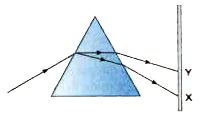
View SolutionIn the given figure, a narrow beam of white light is shown to pass through a triangular glass prism. After passing through the prism it produces a spectrum XY on a screen.
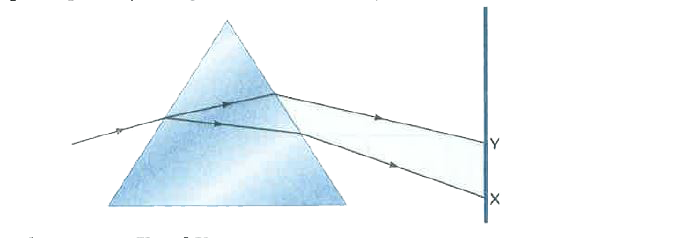
(a) State the colour seen at X and Y.
(b) Why do different colours of white light bend through different angles with respect to the incident beam of light?
View Solution
Knowledge Check
When white light passes through a glass prism
Ared coloured ray undergoes maximum deviation.Bgreen coloured ray undergoes minimum deviation.Cblue coloured ray undergoes minimum deviation.Dviolet coloured ray undergoes maximum deviation.When a beam of white light passes through a glass prism,
the colour of light beam that deviates the least isAa BlueBb RedCc GreenDd VioletA beam of white light is shone onto a glass prism. The light cannot be :
ADeviatedBDispersedCFocusedDRefracted
In the figure given below. a narrow beam of white light is shown to pass through a triangular glass prism. After passing through the prism, it produces a spectrum XY on the screen.
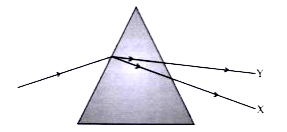
Name the phenomenon.
View SolutionA narrow beam of white light is shown to pass through a triangular glass prism. After passing through the prism, it produces a specturm XY on a screen.
(a) State the colour seen at XandY.
(b) Why do different colours of white light bend through different angles with respect to the incident beam of light ?
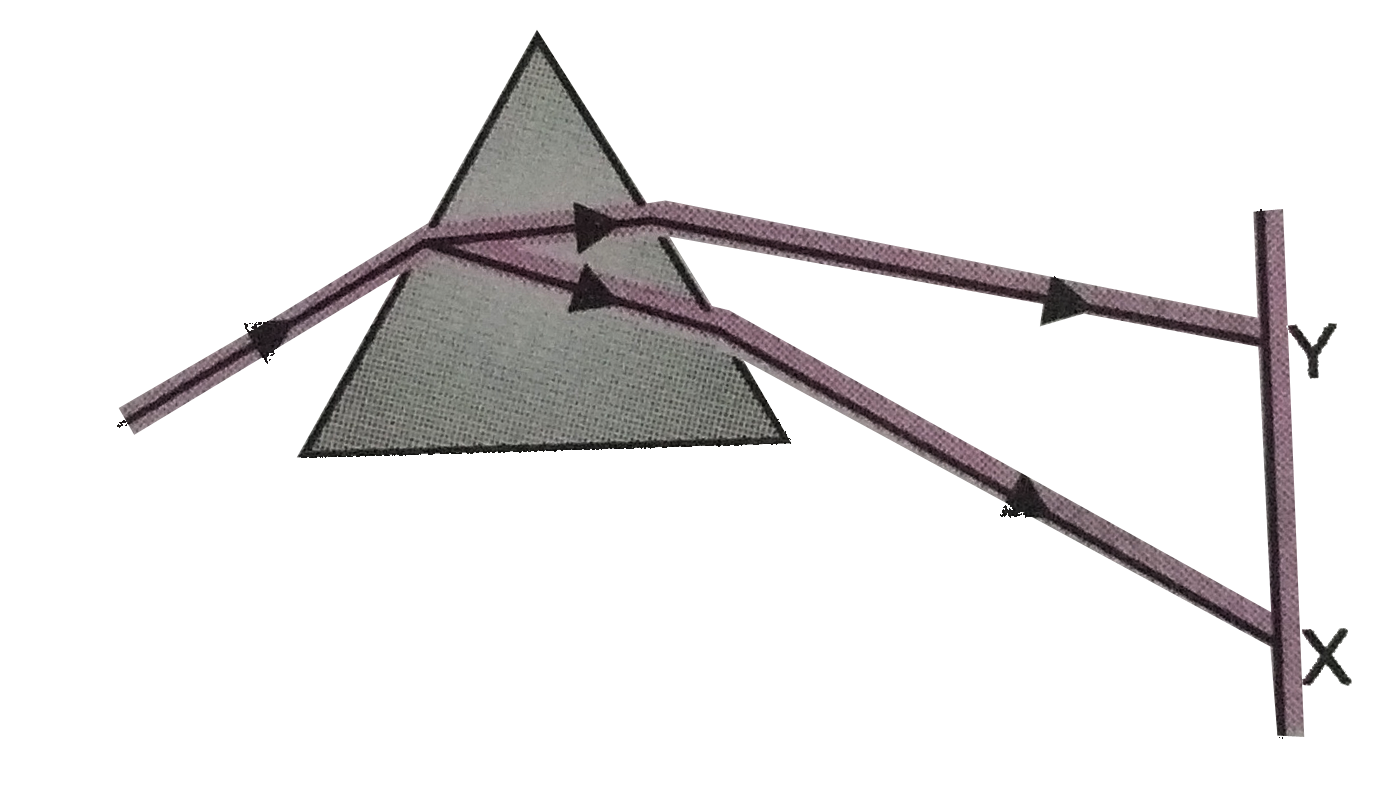 .
.
View SolutionIn the figure given below, a narrow beam of white light is shown to pass through a triangular glass prism. After passing through the prism, it produces a spectrum XY on the screen.

(i) Name the phenomenon.
(ii) State the colours seen at X and Y.
(iii) Why do different colours of white light bend at different angles through a prism ?
View SolutionA narrow beam of white light is shown to pass through a triangular glass prism. After passing through the prism, it produces a specturm XY on a screen.
(a) State the colour seen at XandY.
(b) Why do different colours of white light bend through different angles with respect to the incident beam of light ?
 .
.
View SolutionA narrow beam PQ of white light is passing through a glass prism ABC as shown in the diagram. Study the diagram and answer any four questions.
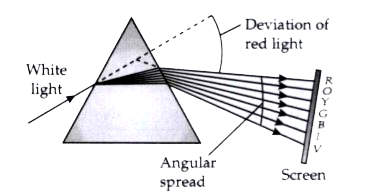
What is dispersion of light?
View Solution
